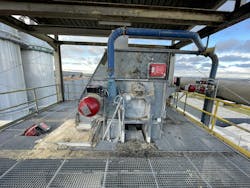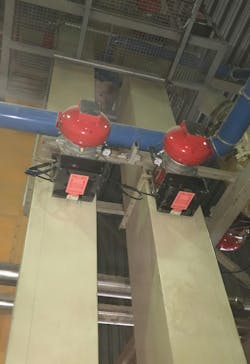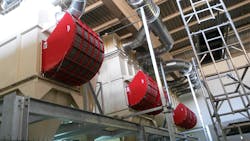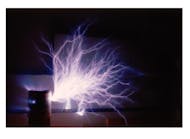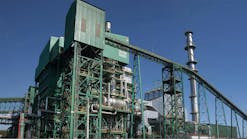Protecting food manufacturing processes from dust explosions
Maintaining food security has become a major issue in society, and one of the keys to a secure and reliable supply of food is ensuring a continuous production process. But the processing and storing of powdered foods and ingredients presents a major risk of unplanned production stops. Industrial processes involving dry bulk foods or animal feed can quickly create an explosive atmosphere by stirring up dust.
Virtually all dry bulk products used in agriculture, such as flours made from grain, pulses and seeds, can form an explosive mixture in the right dust concentration. Other potentially explosive substances include starches, binders, sugars and sweeteners. Even non-powdered materials such as feed pellets often create fine, flammable dusts through constant friction.
Dust explosions can be devastating due to the massive rise in pressure they create, which presents a huge risk not only to human life, but also in terms of damage to equipment and unplanned production downtime.
Critical mixtures of dust and air frequently arise around equipment such as conveyor systems, mills, dust collectors and cyclones, especially if they are operated pneumatically. For example, excess powder can escape from a bucket elevator and concentrate in the air. The air movement means that the dust particles remain airborne much longer than usual.
In the presence of airborne dust, an explosion can be triggered by flames, glowing embers, hot surfaces, static electricity or sparks generated mechanically or electrically. As the risk factors are too common and too numerous to be completely eliminated, incorporating certified explosion protection into the design of processing equipment is essential to safeguarding production.
The most common explosion protection methods applied to process equipment are suppression, isolation, pressure-relief, and spark detection.
Explosion suppression systems
Active, fast-acting explosion suppression systems nip dust explosions in the bud before they can damage equipment or injure workers. For example, the modular IPD system from Bormann & Neupert by BS&B can stop a developing explosion in a fraction of a second, well before the explosive pressure can unleash its full destructive potential. By keeping the explosions as small as possible, these systems allow production to restart quickly.
The system uses sensors that immediately detect any critical rise in pressure, such as in the head or base of a bucket elevator (Figure 1). It then suppresses the explosion by spraying an effective, food-safe extinguishing agent directly at the source.
Explosion isolation systems
The same technical operating principle is used to isolate explosions. Applying an extinguishing agent creates a barrier that prevents the flames from spreading to connected systems (Figure 2). Active mechanical isolation systems such as Redex active isolation valves or IVE pinch valves from BS&B are also effective to reliably stop the spread of an explosion.
Explosion pressure-relief systems
Conventional pressure-relief (also called “venting”) systems such as rupture discs offer reliable basic explosion protection in areas where the escape of flames and burning particles is acceptable. Such systems burst immediately upon reaching a predefined activation pressure, quickly and instantly creating a large relief opening to protect equipment against the effects of pressure and prevent damage. Flameless pressure-relief systems such as the R-IQ and IQR FlameFree systems from BS&B are a suitable alternative for indoor areas and environments that do not have a sufficiently large safety zone for a conventional pressure-relief vent. These systems consist of a multi-layer filter made of stainless steel that retains flames and particles while allowing the pressure wave to escape.
Spark detection
Spark detection is another preventative explosion protection option. Systems such as the SparkEx system from Bormann & Neupert by BS&B detect sparks, hot particles, embers or flames in the production flow and then extinguish them automatically and reliably to prevent them from igniting an explosion.
Explosion protection in design is vital
Potential sources of ignition and conditions for explosions can almost never be entirely prevented in process equipment handling combustible powders and bulk solids. Design-based explosion protection combines safety with long-term economic efficiency, protecting personnel and facilities and allowing operators to rest assured that they are compliant with the relevant occupational safety regulations.
Bormann & Neupert by BS&B
